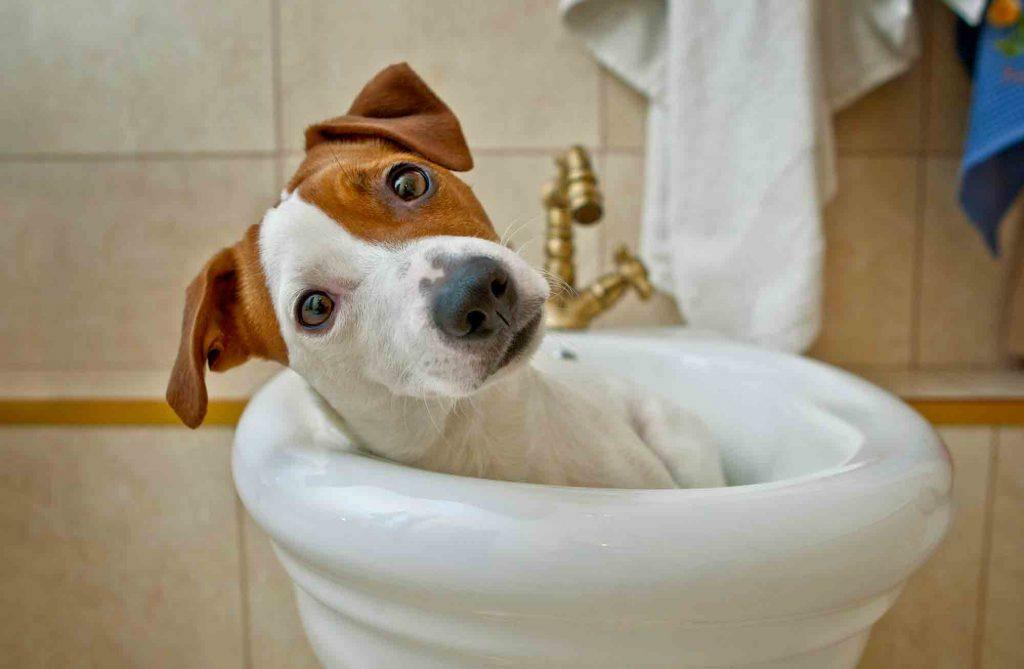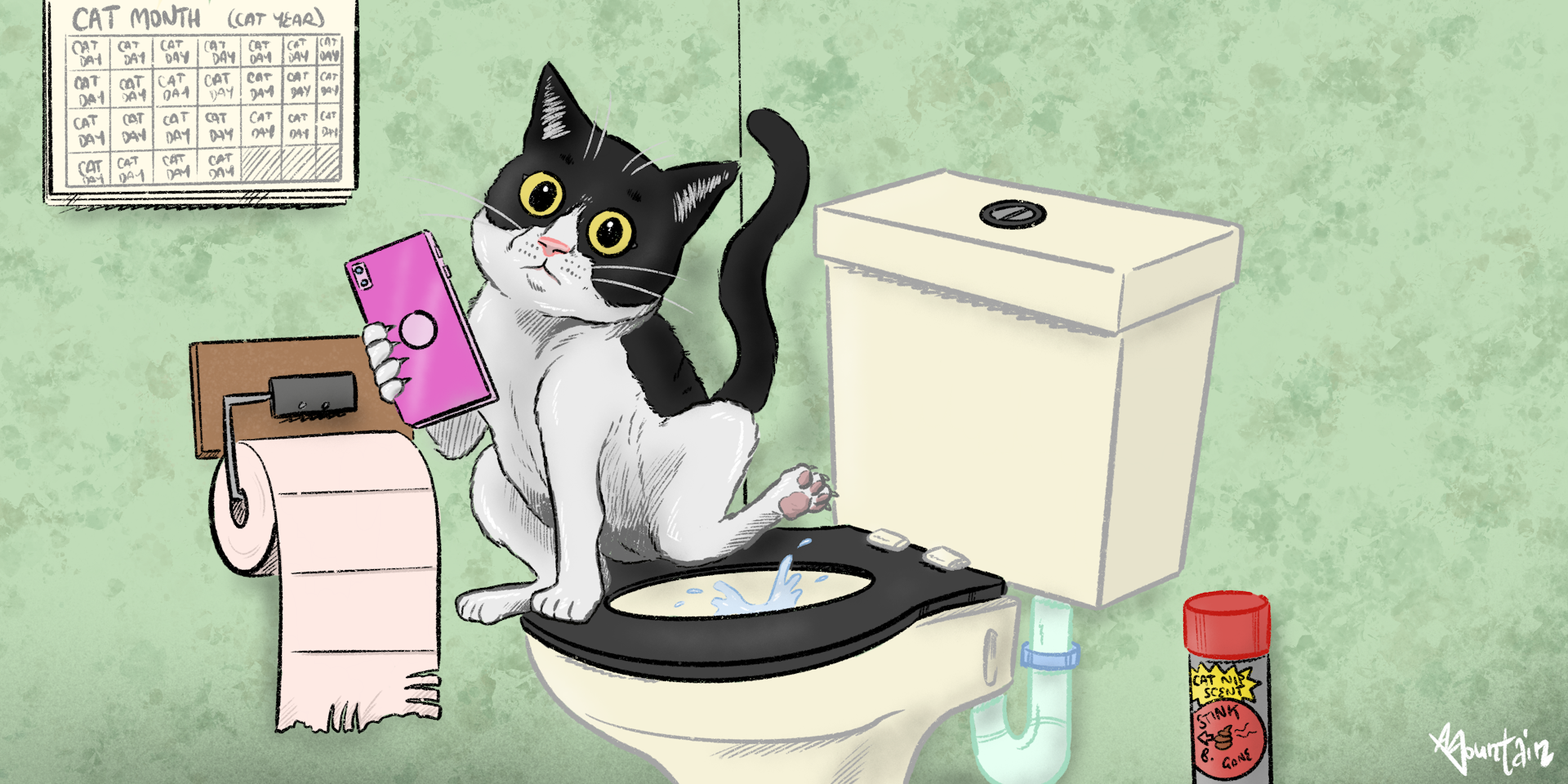Just how do you really feel on the subject of Why you should never flush dog poop down the toilet?

When it pertains to taking care of waste, especially animal waste, many individuals often consider the convenient alternative of flushing it down the commode. Nevertheless, this seemingly very easy service can have severe consequences for the environment and public health. In this post, we'll explore why flushing pet waste down the commode is a negative concept and supply different approaches for correct disposal.
Intro
Proper waste disposal is essential for maintaining ecological sustainability and public health. While it might appear harmless to flush animal waste down the toilet, it can result in various issues, both for the environment and human health.
Threats of flushing animal waste
Environmental effect
Flushing pet waste introduces damaging bacteria and virus into rivers, which can adversely impact water ecosystems. These microorganisms can contaminate water resources and harm marine life, disrupting delicate ecosystems.
Public health problems
Pet waste contains dangerous microorganisms such as E. coli and Salmonella, which can posture significant health risks to humans. Flushing pet waste down the commode can infect water products, bring about the spread of conditions and infections.
Alternatives to flushing
Rather than purging pet waste down the bathroom, there are several alternative disposal approaches that are a lot more environmentally friendly and hygienic.
Composting
Composting pet waste is an eco-friendly means to throw away it. By composting, raw material is broken down into nutrient-rich dirt, which can be utilized to fertilize yards and plants.
Landfill disposal
Disposing of pet waste in a landfill is an additional option. While not as eco-friendly as composting, it is a much safer choice to flushing, as it avoids the contamination of water resources.
Animal garbage disposal systems
There are specialized animal garbage disposal systems available get more info that safely and hygienically take care of animal waste. These systems commonly use enzymes to break down waste and eliminate odors.
Actions to correct pet waste disposal
To ensure appropriate disposal of animal waste, comply with these actions:
Scooping and bagging waste
Frequently scoop and bag animal waste utilizing eco-friendly bags. This protects against waste from infecting the setting.
Making use of designated waste containers
Dispose of bagged animal waste in designated waste containers, such as garden compost bins or garbage dump containers. Prevent flushing it down the commode in all prices.
Cleansing litter boxes and animal locations routinely
On a regular basis clean can and pet areas to avoid the buildup of waste and microorganisms. Use pet-safe cleansing products to keep hygiene.
Advantages of proper disposal approaches
Adopting correct disposal methods for pet waste provides numerous benefits:
Minimized environmental pollution
Proper disposal methods minimize the risk of environmental pollution, securing rivers and communities from contamination
Decreased threat of water contamination.
By staying clear of flushing animal waste down the bathroom, the risk of water contamination is significantly lowered, securing public health.
Boosted sanitation and health
Appropriate disposal approaches advertise far better hygiene and health, developing a more secure setting for both people and animals.
Final thought
In conclusion, flushing pet waste down the commode is dangerous to the environment and public health. By taking on alternate disposal methods and following correct waste administration practices, we can decrease the unfavorable impact of pet waste and contribute to a cleaner, healthier earth.
Why You Should Never Flush Cat Poop Down the Toilet
A rose by any other name might smell as sweet, but not all poop is created equal. Toilets, and our sewage systems, are designed for human excrement, not animal waste. It might seem like it couldn’t hurt to toss cat feces into the loo, but it’s not a good idea to flush cat poop in the toilet.
First and foremost, assuming your cat uses a litter box, any waste is going to have litter on it. And even the smallest amount of litter can wreak havoc on plumbing.
Over time, small amounts build up, filling up your septic system. Most litter sold today is clumping; it is made from a type of clay that hardens when it gets wet. Ever tried to scrape old clumps from the bottom of a litter box? You know just how cement-hard it can get!
Now imagine just a small clump of that stuck in your pipes. A simple de-clogger like Drano isn’t going to cut it. And that means it’s going to cost you big time to fix it.
For an amusing, graphic tale of what happens when you flush too much litter down the toilet all at once, take a few minutes to read Gene Weingarten’s 2017 Washington Post column “So that’s what happens when you flush cat litter down the toilet.”
Parasitic Contamination
Believe it or not, your healthy kitty may be harboring a nasty parasite. Only cats excrete Toxoplasma in their feces. Yet it rarely causes serious health issues in the cats that are infected. Most people will be fine too if infected. Only pregnant women and people with compromised immune systems are at risk. (If you’ve ever heard how women who are expecting are excused from litter cleaning duty, Toxoplasma is why.)
But other animals may have a problem if infected with the parasite. And human water treatment systems aren’t designed to handle it. As a result, the systems don’t remove the parasite before discharging wastewater into local waterways. Fish, shellfish, and other marine life — otters in particular — are susceptible to toxoplasma. If exposed, most will end up with brain damage and many will die.
Depending on the species of fish, they may end up on someone’s fish hook and, ultimately on someone’s dinner plate. If that someone has a chronic illness, they’re at risk.
Skip the Toilet Training
We know there are folks out there who like to toilet train their cats. And we give them props, it takes a lot of work. But thanks to the toxoplasma, it’s not a good idea.
Leave the toilet to the humans, and accept your future litter cleaning duty.

On a regular basis clean can and pet areas to avoid the buildup of waste and microorganisms. Use pet-safe cleansing products to keep hygiene.
Advantages of proper disposal approaches
Adopting correct disposal methods for pet waste provides numerous benefits:
Minimized environmental pollution
Proper disposal methods minimize the risk of environmental pollution, securing rivers and communities from contamination
Decreased threat of water contamination.
By staying clear of flushing animal waste down the bathroom, the risk of water contamination is significantly lowered, securing public health.
Boosted sanitation and health
Appropriate disposal approaches advertise far better hygiene and health, developing a more secure setting for both people and animals.
Final thought
In conclusion, flushing pet waste down the commode is dangerous to the environment and public health. By taking on alternate disposal methods and following correct waste administration practices, we can decrease the unfavorable impact of pet waste and contribute to a cleaner, healthier earth.
Why You Should Never Flush Cat Poop Down the Toilet
A rose by any other name might smell as sweet, but not all poop is created equal. Toilets, and our sewage systems, are designed for human excrement, not animal waste. It might seem like it couldn’t hurt to toss cat feces into the loo, but it’s not a good idea to flush cat poop in the toilet.
First and foremost, assuming your cat uses a litter box, any waste is going to have litter on it. And even the smallest amount of litter can wreak havoc on plumbing.
Over time, small amounts build up, filling up your septic system. Most litter sold today is clumping; it is made from a type of clay that hardens when it gets wet. Ever tried to scrape old clumps from the bottom of a litter box? You know just how cement-hard it can get!
Now imagine just a small clump of that stuck in your pipes. A simple de-clogger like Drano isn’t going to cut it. And that means it’s going to cost you big time to fix it.
For an amusing, graphic tale of what happens when you flush too much litter down the toilet all at once, take a few minutes to read Gene Weingarten’s 2017 Washington Post column “So that’s what happens when you flush cat litter down the toilet.”
Parasitic Contamination
Believe it or not, your healthy kitty may be harboring a nasty parasite. Only cats excrete Toxoplasma in their feces. Yet it rarely causes serious health issues in the cats that are infected. Most people will be fine too if infected. Only pregnant women and people with compromised immune systems are at risk. (If you’ve ever heard how women who are expecting are excused from litter cleaning duty, Toxoplasma is why.)
But other animals may have a problem if infected with the parasite. And human water treatment systems aren’t designed to handle it. As a result, the systems don’t remove the parasite before discharging wastewater into local waterways. Fish, shellfish, and other marine life — otters in particular — are susceptible to toxoplasma. If exposed, most will end up with brain damage and many will die.
Depending on the species of fish, they may end up on someone’s fish hook and, ultimately on someone’s dinner plate. If that someone has a chronic illness, they’re at risk.
Skip the Toilet Training
We know there are folks out there who like to toilet train their cats. And we give them props, it takes a lot of work. But thanks to the toxoplasma, it’s not a good idea.
Leave the toilet to the humans, and accept your future litter cleaning duty.

I discovered that blog entry about when doing a search on the search engines. Do you know about another individual who is inquisitive about the topic? Please feel free to promote it. I recognize the value of reading our article about Can You Flush Dog and Cat Poo Down the Toilet?.
Call Today